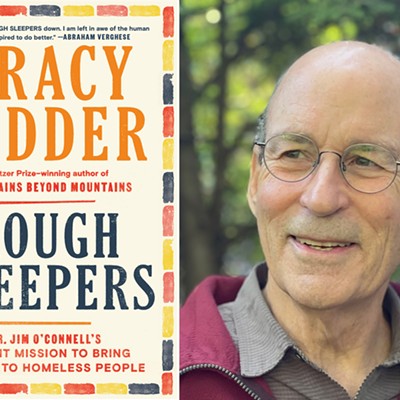No one considers Wal-Mart a neighborhood hangout. Yet while such Wal-Mart predecessors as five-and-dime stores were as much gathering places as shopping destinations, the G.C. Murphy's of the world had surprisingly much in common with the mega-store.
That's one nugget in Jason Togyer's new book For the Love of Murphy's: The Behind-the-Counter Story of a Great American Retailer (Penn State University Press).
"I was interested to learn that Murphy's development strategy was the same as Wal-Mart's," says Togyer, 34, a former McKeesport Daily News and Pittsburgh Tribune-Review reporter.
Murphy's premier store opened in McKeesport in 1906. When it expanded, the company -- like Wal-Mart, years later -- opened locations in nearby towns instead of moving farther away. By the time it was bought out, in the 1980s, Murphy's had more than 70 Pittsburgh-area locations.
"People also allotted the same criticisms of the G.C. Murphy Co. that you hear now about Wal-Mart, like they're destroying small businesses," adds Togyer.
The comparison goes only so far, however. Murphy's "wanted to be part of the town, so they always located in downtown areas, whereas Wal-Mart tends to go near the outskirts of towns," says Togyer.
Commissioned by the G.C. Murphy Foundation, the charitable organization that was spun off when the company was taken over, Togyer's book was born of a desire to preserve Murphy's legacy. However, when Togyer began his research, he realized that the stores transcended their history.
"Once some newspaper stories were written about what [he and the foundation] were doing and we put a Web site up, people started to come to us," says Togyer. "It was clear that there was a rich vein of nostalgia. People had fond memories of working or shopping in these stores."
"It was never 'shopping is drudgery.' It was 'shopping is fun,'" he says. "People would go into Murphy's every day just to get a bag of candy or a package of cigarettes."
Beyond the sentimentality conveyed in its dozens of photographs and personal narratives, the book presents a detailed account of the five-and-dime industry. Togyer explains how such businesses survived the Great Depression and coped with two world wars. He also notes that Murphy's responded to the civil-rights movement much like other lunch counters: The chain's northern stores integrated by the mid-1950s, while stores below the Mason-Dixon line retained segregated dining areas until 1965.
Yet in other ways, continuity was part of the stores' appeal. "The store that I used to go to in McKeesport had the same clerks from the time I was a baby until the store closed," says Togyer. "Does anyone really know the clerks at Wal-Mart? They change so often."
Ultimately, though, Murphy's failure to adopt such big-box strategies as streamlined distribution and price-scanning technology helped hasten its collapse.
Togyer continues to accept Murphy's stories. "We are going to put the content online or in an exhibit at the McKeesport Heritage Center," he says. "Nothing is going to go to waste."
Meanwhile, even as Togyer makes use of Murphy's memories, some of Murphy's old buildings get new life. Millcraft Industries, for instance, plans a $40 million redevelopment of Murphy's former Downtown Pittsburgh location, on Market Square. Millcraft celebrated the project with a party in the building only a month before Togyer's book was published.













